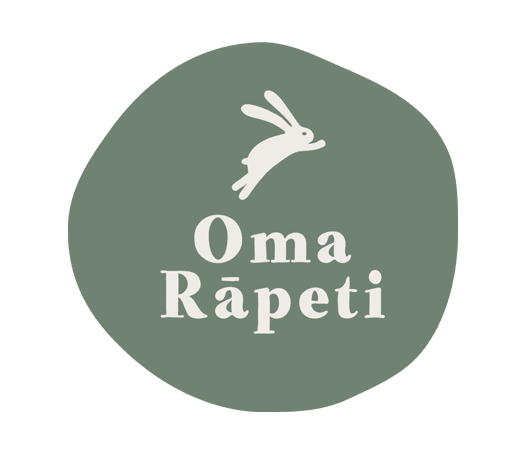Our Rooms — Ko o matou ruma
The Burrow — Te Rua
The Burrow at Oma Rāpeti, Freeman's Bay, is where you will find the youngest members of our whānau. Children in this room vary in age up to around about two years old. This upper age varies as children transition from this room based on their 'readiness,' rather than their age.
We are licensed for 12 children under two years of age, but we prefer to keep the Burrow at ten children with three teachers. Children attend for a minimum of three days per week which we understand helps foster connection and relationships, enabling children to settle comfortably into our space here.
Our Influences
The kaiako (teachers) at Oma Rāpeti, Freeman's Bay, are influenced by the works of Dr. Emmi Pikler and Magda Gerber, alongside other theorists. Kaiako have specific training in these philosophies. Our approach is calm and kept at a child's pace. We give children time to process happenings, participate in their day, and take the lead where appropriate. Our approach is play- and care-based.
Our practice is based on relationships and respect with tamariki and their whānau, therefore, the building of strong relationships is imperative to our programme and is central to all of our work. We believe in the value of building trusting relationships with consistent, professional kaiako. One way we foster this notion is through our main caregiving system.
What is the Main Caregiver System?
At Oma Rāpeti, Freeman's Bay, each tamaiti and their whānau have two main-carers/kaiako. This enables the kaiako and tamaiti to develop a strong, healthy attachment, and assures the whānau that at least one of the two main kaiako will be there consistently. This healthy attachment helps the tamaiti feel comfortable, secure, and happy, which positively impacts their learning and development. This system also enables consistency in care and allows kaiako to be responsive to the individual needs of the tamaiti.
Responsive and Nurturing Childcare
Our approach is responsive to the needs of the tamariki, which are met in a timely and predictable fashion as team members learn and identify the individual cues of each child. The rhythms of the rooms are different for each individual tamaiti as we follow their needs. Our way of being and interacting with each tamaiti and their whānau can, therefore, vary.
We embrace individual ways of being, and children's personal care preferences are respected. As our relationships deepen with whānau and children, we learn more from them and adapt our practice accordingly. We allow children to sleep or rest when tired, eat when hungry, and play how they are innately programmed to play and learn. We are able to respond in such a way because we learn children's unique ways of communicating and are attuned to them.
The Meadow — Te Pātītī
The Meadow is our room for our older tamariki. It is licensed for up to 40 children alongside six teachers. This large space caters for a mixture of ages, starting when tamariki feel ready to leave the Burrow at around two years old, until they are ready to leave for school (between five and six years old).
A mixed age setting is wonderful for building social competencies and allowing Oma Rāpeti to function just like a family does. It fosters amazing tuakana teina relationships, where older tamariki help those younger than them and everyone can learn from each other. Older tamaiti are often found lending a helping hand to the younger ones, guiding them in the rituals of the day.
Once tamariki are roughly three-and-a-half to four years old, they are invited to join our Discovery Group. This group of tamariki and kaiako (teachers) head off on community walks, visit local playgrounds, the local library, or head next door to our local community centre for group activities during the week. This allows our older tamariki time to extend their learning and our younger tamariki time to have the 'run' of the centre.
Tamariki in the Meadow are encouraged to play an active role by contributing to the rhythms and routines within our environment. They are actively involved in the preparation of our kai - from planting and harvesting the fruit and vegetables we grow in our organic garden, to preparing meals, setting tables, and cleaning up after they have eaten.
Tamariki have the choice to access indoor and outdoor spaces when they desire, as a part of our free flow environment. We believe there is no bad weather; only bad clothing! We encourage tamariki to dress appropriately for all weather through the use of dungarees and rain coats, or sun hats and sunscreen.
Your tamaiti will have two main kaiako (teachers) from within the larger Meadow team. These main kaiako will be predominately responsible for the care needs of your tamaiti. The relationship with these kaiako is not exclusive, and as your tamaiti becomes more familiar and develops bonds with other kaiako, they may be supported by them at times when their main kaiako might not be immediately available.
We believe this approach gives tamariki strong, secure relationships with observant and attuned adults. The relationship with these main kaiako is based on trust, respect, and working in partnership with you and your tamaiti.
We believe that the team are here to support, love, and care for the tamariki and their whānau. We work alongside tamariki, giving them guidance rather than solving problems for them. We have a strong focus on 'people literacy.' Kaiako model empathy and emotional understanding, and support our tamariki to recognise and express their own emotions and respond to the emotions of others.


